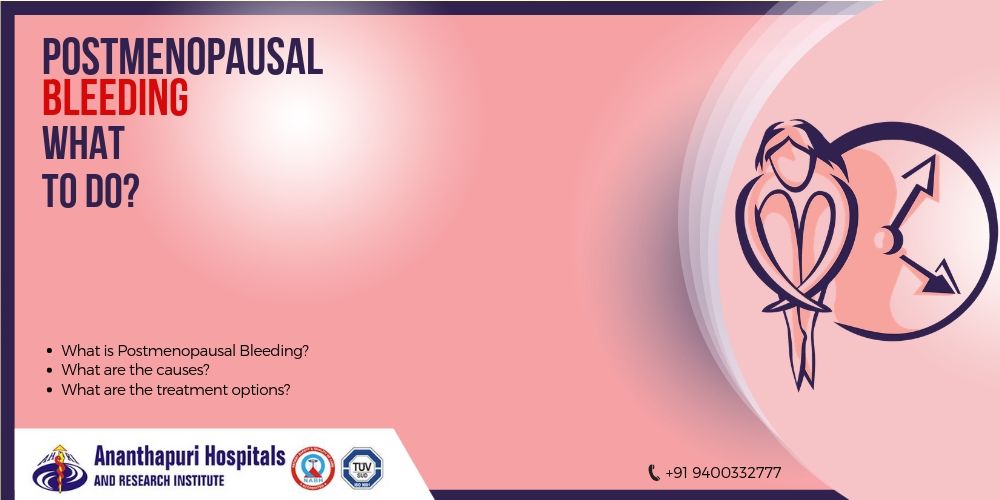- 14/May/2019

Postmenopausal Bleeding: Causes, Symptoms - Ananthapuri Hospitals
WHAT IS POSTMENOPAUSAL BLEEDING (PMB)?
Menopause is the time in the life of a woman when she stops having periods at least for one year. Postmenopausal bleeding is simply any vaginal bleeding that happens after menopause. Postmenopausal bleeding can be a symptom of uterine cancer (unless otherwise proven). So, if you bleed after menopause, don’t hesitate to visit your doctor.
WHAT CAUSES POSTMENOPAUSAL BLEEDING?
A postmenopausal woman experiences bloody vaginal discharge commonly due to vaginal dryness and thinning of vaginal tissues due to lack of estrogen. There are a few reasons why postmenopausal bleeding can happen. Some major causes are:
- Infections
- Pelvic trauma
- Uterine & Cervical polyps (a growth that develops on the uterus/cervix)
- Atrophic vagina or cervix
- Endometrial cancer
- Cervical cancer
- Sexually Transmitted Disease (STD)
- Ovarian tumours
HOW IS THE CAUSE OF POSTMENOPAUSAL BLEEDING DIAGNOSED?
Most of the time, the cause of postmenopausal bleeding is diagnosed through history, physical examination, pelvic examination by your doctor. But sometimes, you may need the following:
- Transvaginal ultrasound examination by scan - Internal examination that involves insertion of a transducer or probe into the vagina to obtain any pathology in the uterus, cervix, tubes and ovaries and to also measure the thickness of the endometrial lining (It should be less than 4mm)
- Hysteroscopy - Surgical procedure that allows your doctor to look inside your uterus, through a narrow telescope, if the endometrial thickness is more than 4mm.
- Histopathology of endometrial tissue - Examination of endometrial tissues that is done under a microscope, to study the changes in the tissues. It is obtained by taking a sample of the endometrium in the following ways: D&C:
- D&C refers to the dilation of the cervix and surgical removal of a part of the uterus lining and/or contents of the uterus by scraping. A D&C can be done under regional anaesthesia (patient is awake) or general anaesthesia (patient is not awake).
- Pipelle Sampling: This procedure obtains a sample of the endometrium without any anaesthesia.
- A cervical smear (pap smear) or a biopsy may also be done to rule out the cervical cause of postmenopausal bleeding.
WHAT ARE THE TREATMENT OPTIONS?
If cancer has been ruled out, your doctor may prescribe estrogen cream or a hormonal replacement therapy like oestrogen alone, or oestrogen along with progesterone, to treat menopausal symptoms. There are also surgical treatments like polyp removal and hysterectomy. Your treatment depends on various factors like the cause of bleeding, the severity of the flow and so on.
Do you suffer from postmenopausal bleeding? If yes, consult a gynaecologist.
Ananthapuri Hospital has a highly experienced team of gynaecologists. To fully understand the treatment options, call us at +91 9400332777 or visit our hospital at Chacka, NH Bypass, Thiruvananthapuram.

